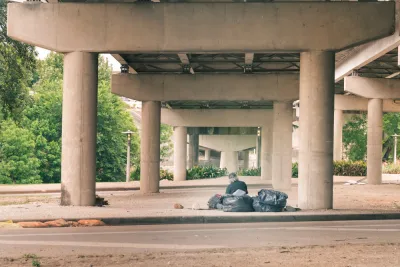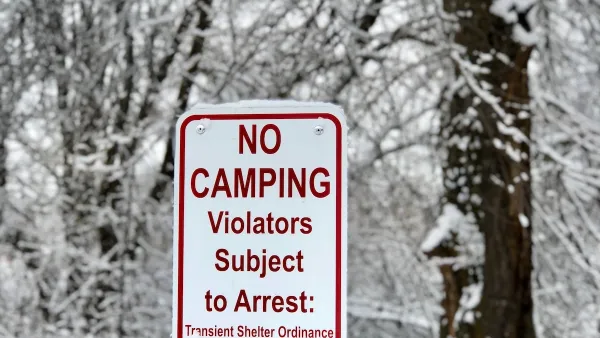Taking a comprehensive ‘Housing First’ approach, the city of Houston has cut homelessness by 63 percent in the last decade.

“During the last decade, Houston, the nation’s fourth most populous city, has moved more than 25,000 homeless people directly into apartments and houses. The overwhelming majority of them have remained housed after two years,” reports Michael Kimmelman in an expansive piece in The New York Times. “The number of people deemed homeless in the Houston region has been cut by 63 percent since 2011, according to the latest numbers from local officials.”
Houston has gotten this far by teaming with county agencies and persuading scores of local service providers, corporations and charitable nonprofits — organizations that often bicker and compete with one another — to row in unison. Together, they’ve gone all in on ‘housing first,’ a practice, supported by decades of research, that moves the most vulnerable people straight from the streets into apartments, not into shelters, and without first requiring them to wean themselves off drugs or complete a 12-step program or find God or a job.
The article details Houston’s efforts and highlights the city’s focus on eliminating “chronic homelessness,” a term referring to people who experience homelessness repeatedly or for longer than a year.
According to Kimmelman, “the big reveal after a year was not that Houston had solved the problem. It hasn’t. There is no one-time fix to homelessness.” For Kimmelman, “The reveal was something different. It was that in broken America it’s still possible for adversaries to share facts and come together around something contentious and difficult. Public and private, county and city, businesses and nonprofits, conservatives and liberals, the housed and unhoused: In Houston, enough of them have agreed on a goal that seems worth striving for.”
FULL STORY: How Houston Moved 25,000 People From the Streets Into Homes of Their Own

National Parks Layoffs Will Cause Communities to Lose Billions
Thousands of essential park workers were laid off this week, just before the busy spring break season.

Retro-silient?: America’s First “Eco-burb,” The Woodlands Turns 50
A master-planned community north of Houston offers lessons on green infrastructure and resilient design, but falls short of its founder’s lofty affordability and walkability goals.

Delivering for America Plan Will Downgrade Mail Service in at Least 49.5 Percent of Zip Codes
Republican and Democrat lawmakers criticize the plan for its disproportionate negative impact on rural communities.

Test News Post 1
This is a summary

Test News Headline 46
Test for the image on the front page.

Balancing Bombs and Butterflies: How the National Guard Protects a Rare Species
The National Guard at Fort Indiantown Gap uses GIS technology and land management strategies to balance military training with conservation efforts, ensuring the survival of the rare eastern regal fritillary butterfly.
Urban Design for Planners 1: Software Tools
This six-course series explores essential urban design concepts using open source software and equips planners with the tools they need to participate fully in the urban design process.
Planning for Universal Design
Learn the tools for implementing Universal Design in planning regulations.
EMC Planning Group, Inc.
Planetizen
Planetizen
Mpact (formerly Rail~Volution)
Great Falls Development Authority, Inc.
HUDs Office of Policy Development and Research
NYU Wagner Graduate School of Public Service





























